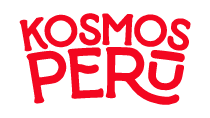Peruvian food is a wonderful combination of local ingredients and international food that came along with different cultures. One of the most influential cuisines for Peru for the past 100+ years has been the Asian cuisine.
There are hundreds of dishes that can be considered adaptations of Chinese gastronomy, and many popularly known Peruvian recipes would’ve never happened if it weren’t for Chinese culture and ingredients.
One of the most delicious merges is the Arroz Chaufa Charapa, a smoky and strong flavored dish. This recipe is a variation of the traditional Arroz Chaufa with exotic ingredients such as cecina (dried pork) and Amazonian chorizo.
Keep reading to learn how to make this delicacy and wow your guests on your next dinner.
Check out: ALACENA CHILI PEPPER CREAM TARI
The History of Arroz Chaufa Charapa
An interesting fact about this recipe is that its name actually comes from a mispronunciation of the Chinese word chǎofàn, which is actually the meal Arroz Chaufa takes its inspiration from.
With the arrival of Chinese immigrants came many of the main ingredient of this recipe, such as ginger, soy sauce and of course the Chinese onion.
To cook a tasty Arroz Chaufa Charapa you’ll need a large skillet (if you have a wok type of skillet it’s even better), the preparation time is 15 minutes and cooking time 20 minutes, and this recipe serves 6 portions.
Ingredients for Arroz Chaufa Charapa
- 4 cups of white fluffy rice, rinsed and ready for cooking
- 400 gr of pork dried meat (cecina) (14 oz approx)
- 400 gr of Amazonian chorizo (pork sausage) (14 oz approx)
- 4 large eggs
- 2 tablespoons of Sillao Kikko soy sauce (you can find it here)
- 1 teaspoon of kion ginger, grated or chopped finely
- 2 cups of Chinese onion finely chopped
- 1 tablespoon of sesame oil
- 2 tablespoons of vegetable oil or olive oil
- 4 large green, ripe bananas (keep in mind that these are not regular bananas, look for the plantain type)
- Salt to taste
- Pepper to taste
Check out: INCA'S FOOD YELLOW HOT PEPPER
Preparation
- Chop the pork dried meat or cecina into small square pieces. Slice the Amazonian chorizo in 1 cm thick slices and chop the Chinese onion as finely as you can.
- Crack the eggs in a bowl and mix them well using a fork, season with salt and pepper to taste and set aside.
- Rinse and cook the white rice, trying to leave it as fluffy and firm as you can.
- Take a large skillet, add 1 tablespoon of vegetable oil or olive oil and put on medium heat. Once the skillet is hot enough throw the Amazonian chorizo slices, letting it fry and release its natural grease for about a minute.
- Add the pork dried meat (cecina) and fry for another 4 minutes until it turns a golden brown color. Take the meat from skillet and set aside.
- Using the same skillet add more oil and add the eggs. Use a spatula to scramble the egg in pieces as small as you can manage. Once the egg is done take it from skillet and set aside.
- Again take the same skillet and pour the remainders of the olive oil or vegetable oil and all of the sesame oil and let it heat well. Pour the kion ginger grated or chopped and a few seconds later add the white rice and the Sillao Kikko soy sauce.
- Fry the mix for a few minutes constantly stirring to avoid the rice from sticking to the skillet and to make sure all of the flavors left in the skillet are properly absorbed by it.
- Once the rice looks brown from completely absorbing the Sillao Kikko soy sauce, add the pork dried meat or cecina, the Amazonian chorizo slices and the egg. Stir well and check the flavor, if you feel something is missing season to taste.
- Take the skillet from the fire, add the chopped Chinese onion and stir well one last time. Let the dish rest for a couple of minutes before serving.
The best way to serve Arroz Chaufa Charapa is to peel and slice the plantain bananas and fry them a bit in a medium skillet with vegetable oil. The flavor of your dish will be uplifted by the surprising flavor of the bananas on the side, on top or even on a separate plate.






